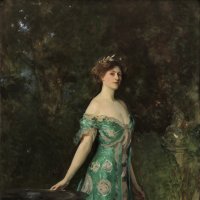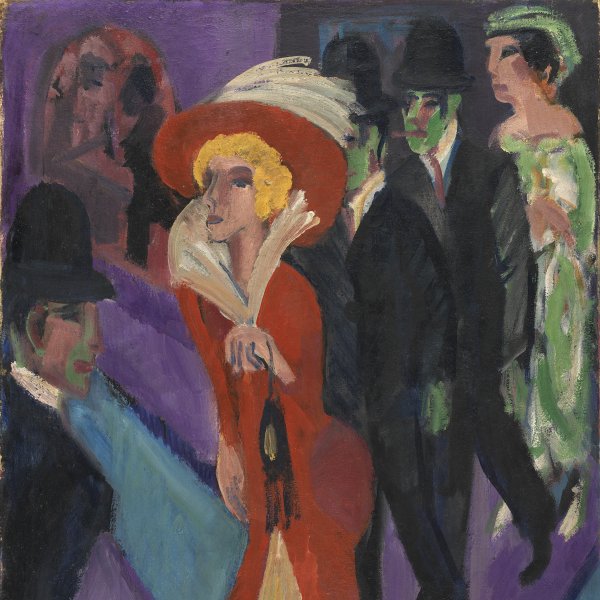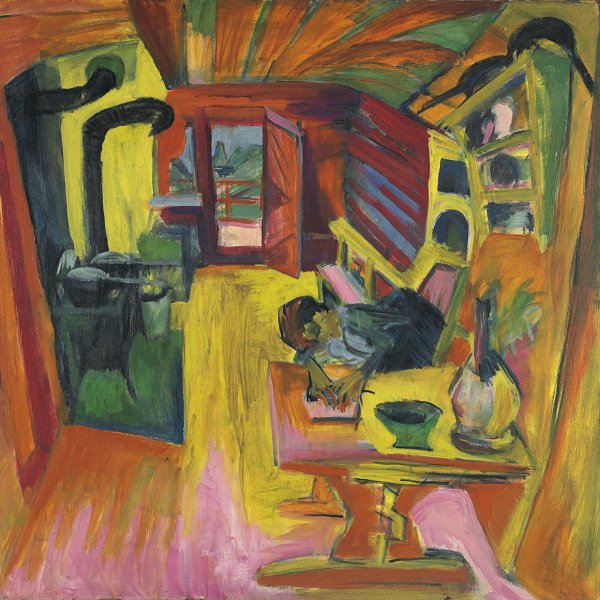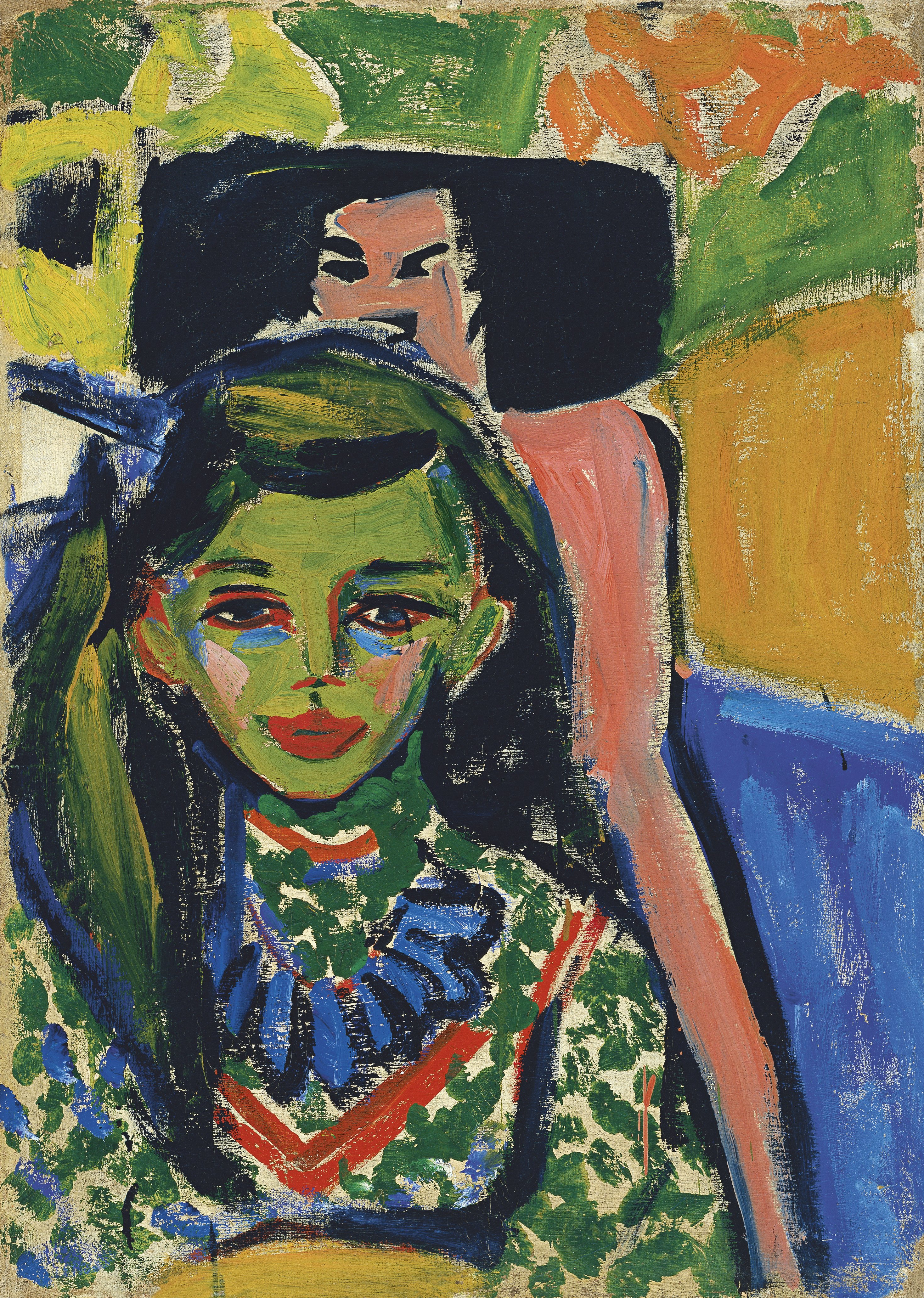Fränzi in front of Carved Chair
This portrait of a girl from the working-class district of Friedrichstadt in Dresden is one of the finest examples of the Expressionist style of the German group Die Brücke, characterised by the simplification of form and the arbitrary use of colour. Here, Fränzi, who modelled for a number of portraits by Kirchner and other members of the group, sits on a chair whose back has been carved into the shape of a naked woman. The girl stares defiantly at the viewer as the intense green of her face, defined by thick, unnaturalistic brushstrokes, contrasts sharply with the pink flesh tones of the female figure that frames her. The frontal placing of the sitter suggests the influence of Munch, Van Gogh and Gauguin, and also recalls Primitive art.
Fränzi, aged about twelve when she sat for the painting, belonged to the group of young girls from the Friedrichstadt working-class district frequented by the Expressionists and who posed for them as models. She is often linked to Marcella, another model who also features in many of the works dating from those years and is sometimes said to be her sister and sometimes a friend. Kirchner portrays Fränzi half length in a subjective rending that is far removed from the traditional examples of the genre. Fränzi’s hair is neatly combed and she has dressed for the occasion in a patterned dress and huge blue bead necklace. The model leans against the back of a roughly carved chair (most likely made by Kirchner himself) which takes on a woman’s silhouette in the manner of a phantasmagorical shadow. Unlike Fränzi, this figure is nude and is intentionally painted in a very life-like flesh colour.
Our attention is immediately drawn to the girl’s face and her fixed stare. Her face is the most elaborately rendered part of the body; her features are concealed in an anti-naturalistic manner using a yellowish green colour with a few touches of pink and blue applied with thicker brushstrokes than in the rest of the painting. Her voluminous, slightly parted lips painted deep red are particularly striking and convert the portrait as a whole into the symbol of an awakening sexuality.
The simplified forms, Expressionist deformation and arbitrary use of colour are characteristic of the pictorial style of Die Brücke from 1908 onwards, when formal issues became a primary concern owing to the influence of the French Fauves. The application of colour using thick, sweeping brushstrokes delimited by black lines or bare areas of canvas in order to accentuate the two-dimensionality of the composition point — as Magdalena Moeller has stated — to the mark of Matisse, whose work was shown at the Galerie Cassirer in Berlin 1909. The frontality of the figure also recalls pictorial models of Munch, Van Gogh and above all Gauguin.
The portrait also displays the influence of the primitive art from Dresden’s ethnographic museum, which opened to the public in March 1910. Kirchner himself wrote in retrospect that “in this museum I found the carved beams of the natives of the Palau islands, whose figures showed exactly the same formal language as mine.” Also closely linked to tribal art is the decoration of Kirchner’s studio, which provides the background to the portrait. The mural, painted by the artist and featuring highly schematised female nudes against a deep green background, is often found in works of his. It can also be glimpsed in a photograph Kirchner took of Fränzi and a boy in his Dresden studio, in which the girl is sprawled on some cushions strewn over the floor and has a fairly provocative gaze.
Paloma Alarcó
Emotions through art
This artwork is part of a study we conducted to analyze people's emotional responses when observing 125 pieces from the museum.










